Hello, Hive Motors Community! After 2 years on Hive, I'm very happy to have finally found this place!
I have been a general mechanic for the last 25 years or so, and I work on just about anything that is broken. In my day job, I work mostly on commercial trucks and construction equipment. As a side gig, I repair everything from antiques to ziplines, but most of my repairs are either automotive or electronic.
For this post, I'll just be showing the process of plugging a tubeless tire, as the title suggests. This is a very simple repair that anyone can do, but surprisingly few people seem to attempt it.
Tire repair kits are available at most auto parts stores and gas stations in America, and usually cost less than $10. Sometimes you can find them in the automotive section of 'dollar' stores, where they usually cost $5 or less. A typical tire plug kit will come with a tool for cleaning the puncture in the tire, a tool for inserting the plugs, and a package of tire plugs.
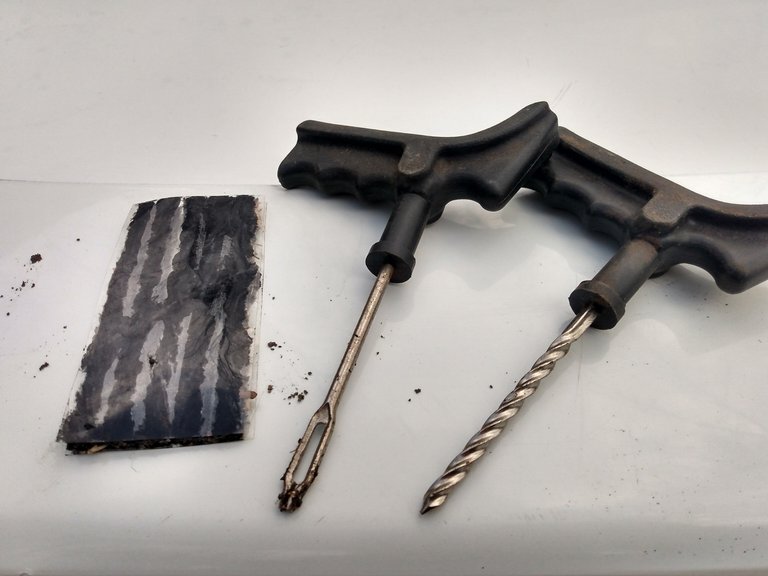
Tire plugs should only be used on tubeless tires, and only in the tread area. Tubed tires, or punctures in the sidewall of tubeless tires, will need to be patched. I prefer to plug a tire when possible, because you do not have to remove the tire from the rim to use a plug.
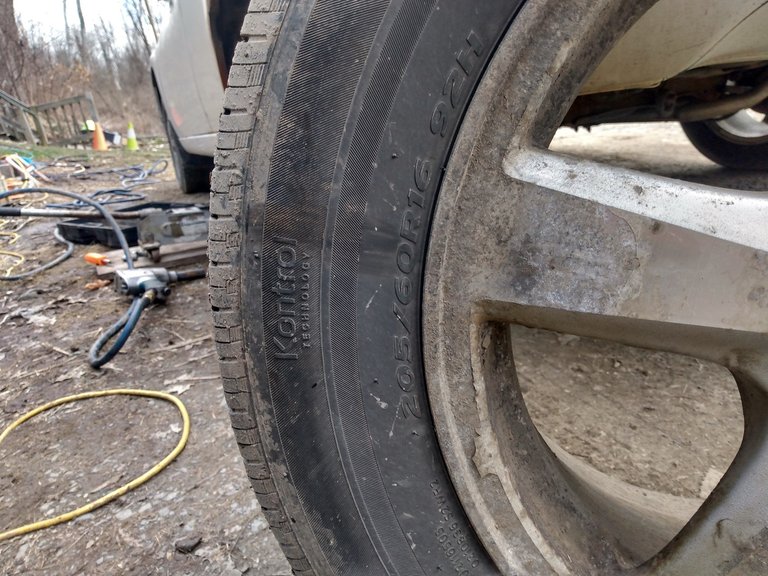
The first step is to find out where the tire is punctured. Most of the time you will be able to hear the air hissing out, and can feel it with your hand. That was the case with this tire, and I made a smudge mark in the corresponding spot of the sidewall, to make it easier to find again later. On most trucks and construction vehicles, you can plug a tire without removing it from the vehicle, but my Honda Accord doesn't have enough room around the tire to plug it without taking it off first.
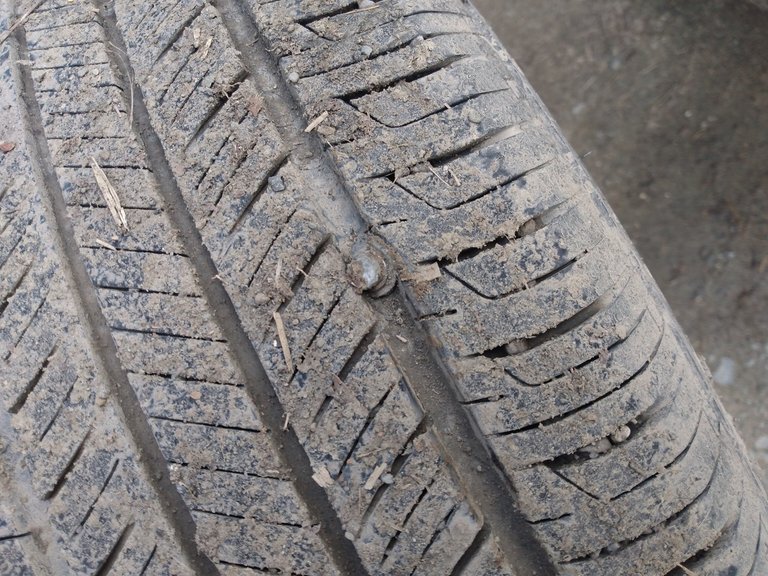
This was a pretty good sized screw that punctured the tire, so it was easy to find. If you're having a hard time locating the puncture, an old trick is to spray the tire with any type of soapy cleaner; I usually use window cleaner. Bubbles will form immediately wherever air is escaping the tire.
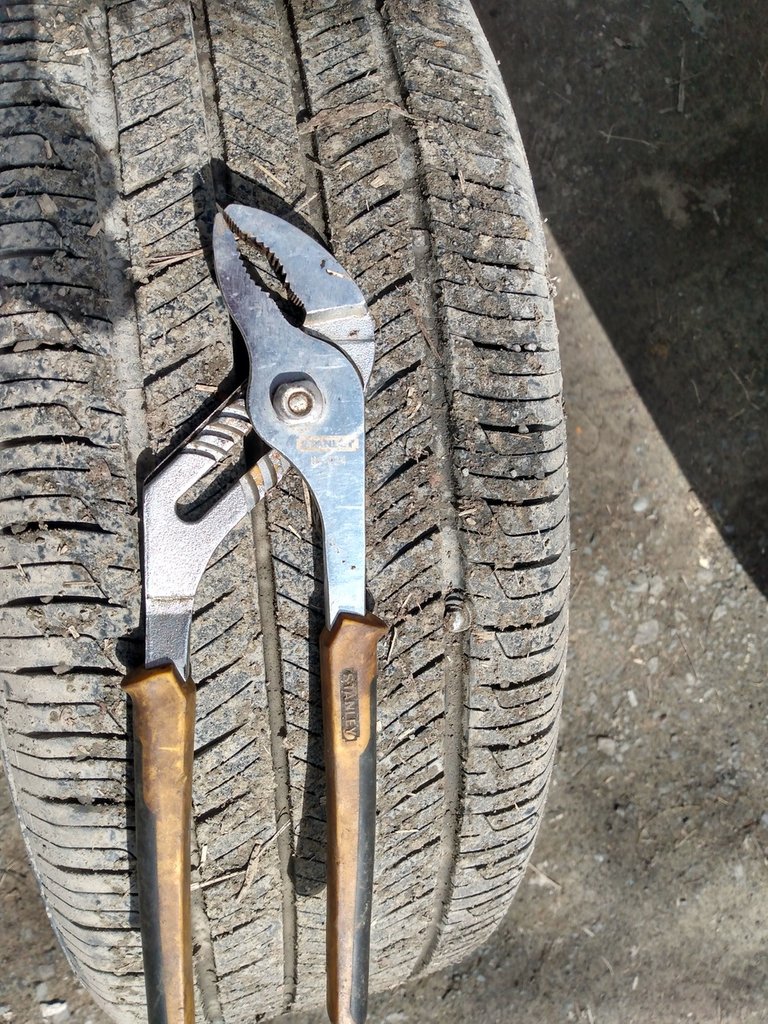
Next step is to remove whatever is stuck in your tire, if it is still there. My favorite removal tool is channel lock pliers, but over the years I've used hammers, screwdrivers, odd pieces of scrap metal, and even my fingers to get various things pried out of tires. Anything that gets the job done will work.
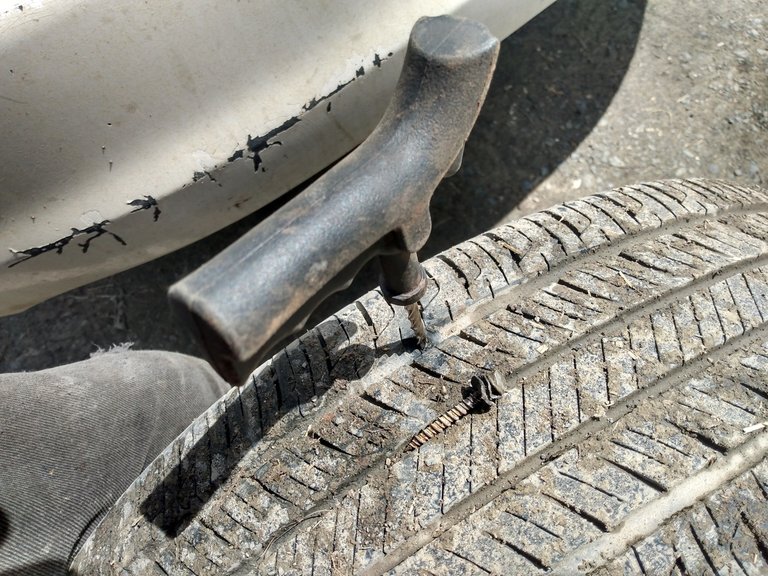
Once you get the foreign object removed, you need to scrub the hole out with the cleaner tool. Pushing the tool into the hole can be very difficult, especially on tires for commercial vehicles. If it seems impossible, there may still be some foreign object stuck in the hole. Force it through with the cleaning tool... if you're unable to get the cleaning tool in, you won't be able to get the plug in.

The plug insertion tool will have an opening at the end. Thread the plug into this opening, just like threading a needle, and pull it through until it centered in the tool, as seen above. I leave the cleaning tool inserted in the hole while I set this up, to keep as much air in the tire as possible.
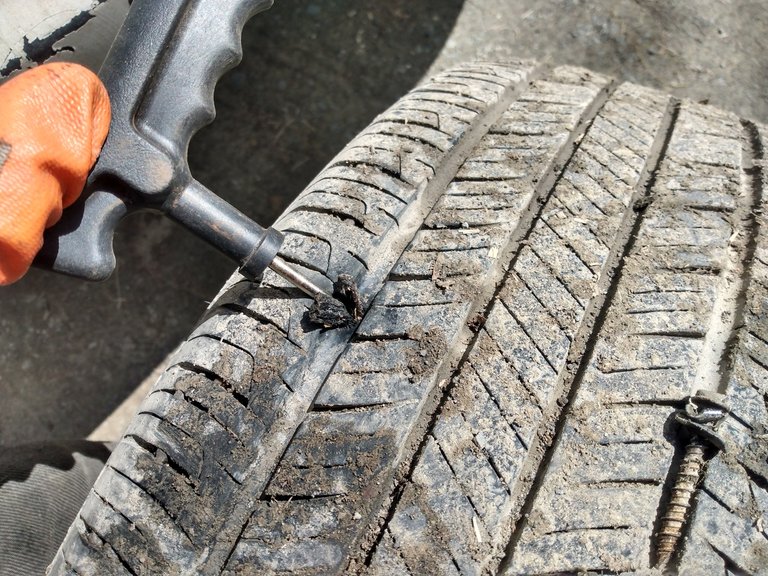
Once the plug is ready, remove the cleaner tool from the hole, and insert the plug. Push the plug in MOST of the way, but not ALL of the way. If you accidentally push the plug in all the way, you can try pulling it back out and reinserting it, but it will most likely slip off the insertion tool and remain inside the tire. If this happens, just try again with another plug. Once the plug is properly inserted, rotate the insertion tool for at least two full turns, and pull the insertion tool out of the tire. If the plug tries to pull out with the tool, you may need to push the plug in with your hand at the same time you pull out on the tool.
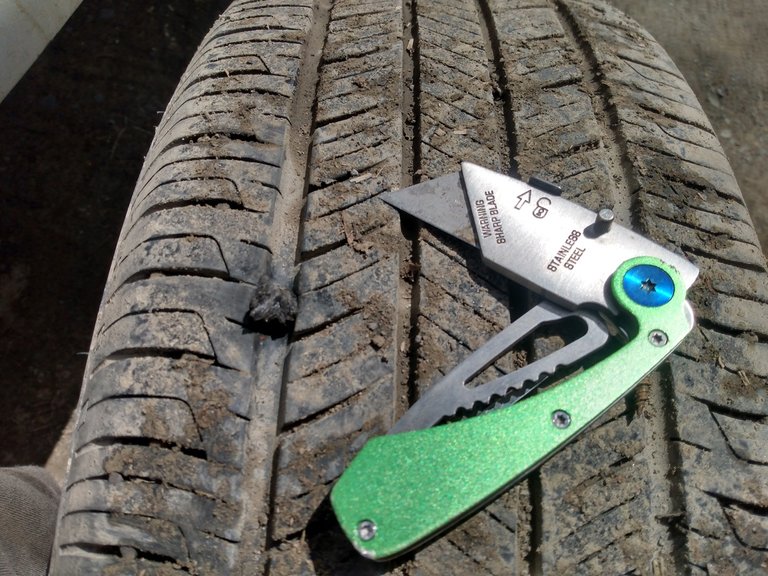
Once the plug is inserted and the tool removed, cut the excess plug off with a sharp knife. I recommend a good utility knife with a new blade... the plugs can very difficult to cut through.
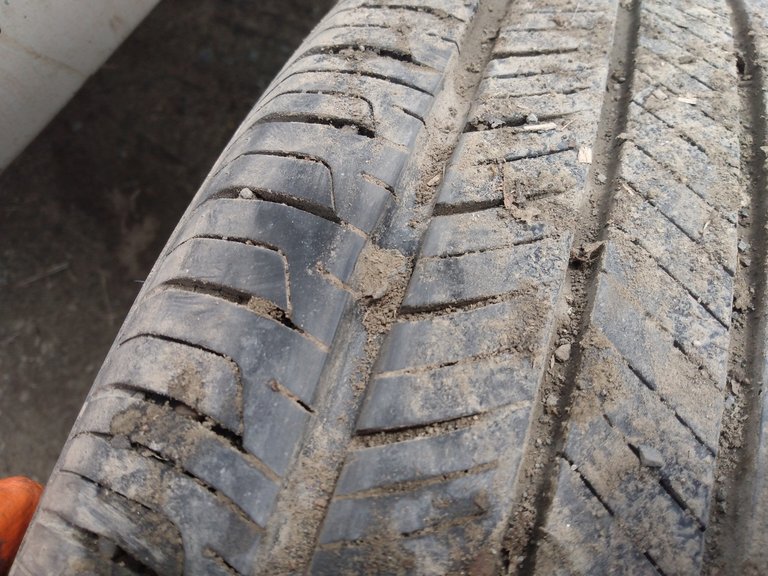
You should cut the plug off as close to the tire as you can. If too much of the plug is left protruding, it can actually pull out of the tire while you're driving. I also like to rub a little dirt on the plug after I cut it, to keep it from sticking to paved surfaces.
After that, you should be all set. If air is still leaking around your plug, you can try inserting a second one. I've often had to use two plugs on larger tires, like those on tractors and loaders. Some auto parts stores sell oversized plugs for use on larger tires, or bigger punctures. Spraying some soapy cleaner on the plug can be a good way to see if any tiny amounts of air are leaking out.
That's all there is to it! Tire plugs are one of the cheapest and easiest DIY repairs you can do on a vehicle, and a single $10 plug kit will usually come with at least 5 plugs. A typical repair shop will charge at LEAST $20 to perform this service for you, and they will use the same $10 plug kit you can buy anywhere, so that $10 and a little know how can save you $100 in tire repair.
I hope you all enjoy my first post to this community! Here is a list of other automotive related posts I've shared on Hive:
How to change a rear brake caliper and bracket.
How to make your own brake lines.